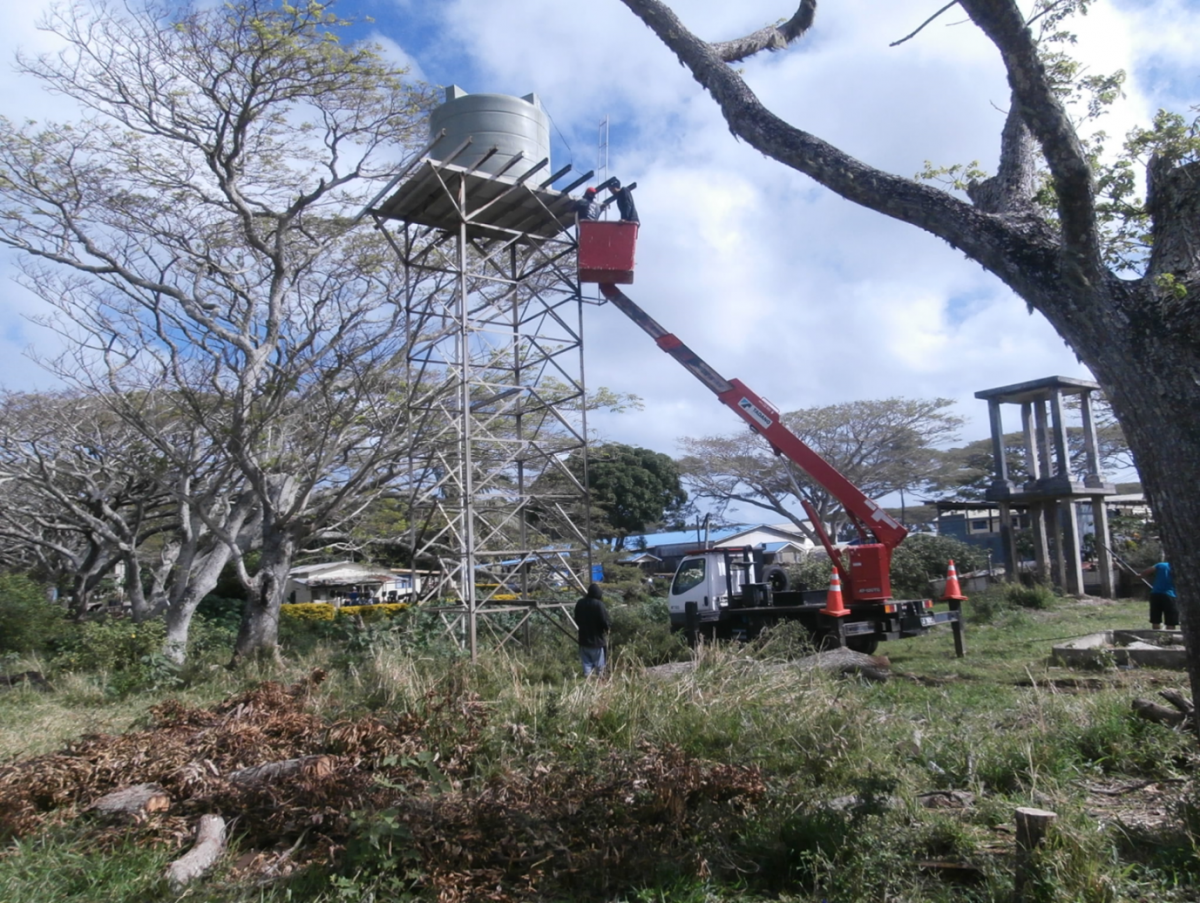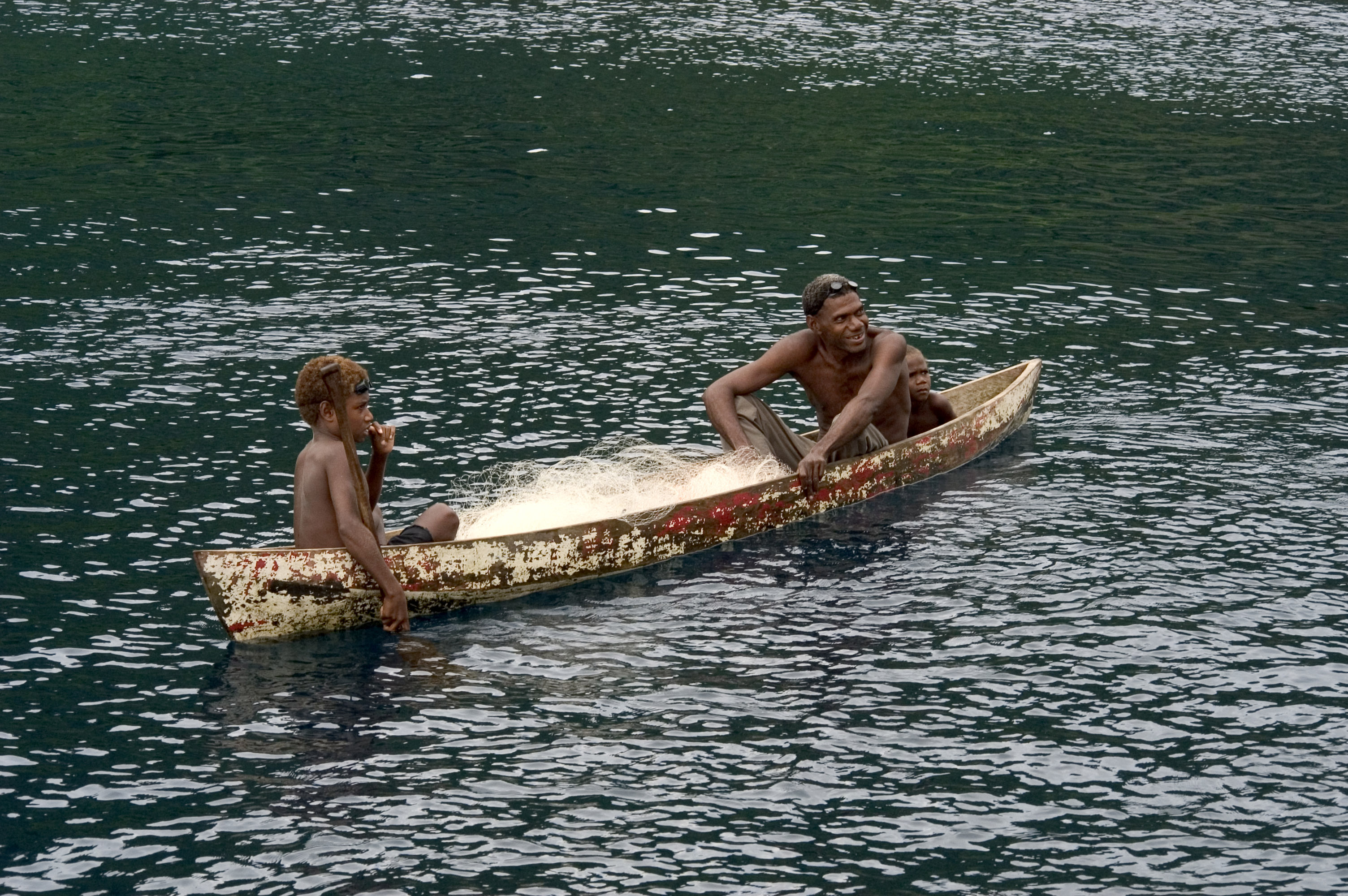Improving the sustainable use of groundwater in Tongatapu
Many places in the Pacific rely on groundwater as their source of fresh drinking water.

Photo: Installing floater on existing water tanks. PC IUCN
Under the Energy, Ecosystems and Sustainable Livelihoods Initiative (EESLI) Phase II, IUCN and the Government of the Kingdom of Tonga jointly implemented the Community PV Powered Water Pumping Phase IIIa [Tongatapu] Project.
With diesel pumps having the risk of contaminating the water source through diesel spills, the project replaced eleven (11) existing diesel fuelled water pumps pumping groundwater to overhead water tanks in Tongatapu with solar-powered water pumps.
With funding from the Governments of Italy and Austria, IUCN assisted the Tonga Energy Unit in the Ministry of Meteorology, Energy, Information, Disaster Management, Environment, Climate Change and Communications (MEIDECC) with the Community PV Powered Water Pumping Phase IIIa [Tongatapu] Project. The project involved the acquisition of 11 solar water pumps; automatic switching systems and floaters and the installation and commissioning of these systems; and the training of community leaders and village technicians on the maintenance of the groundwater pumping system. The solar PV pumps do not have batteries but use direct current from the solar array.
While contamination from diesel spills posed a risk, another challenge was the issue of resource conservation. At times, pump operators would leave the pump running in the morning and would head to work in their plantations. Because of this, the water would overflow from the overhead tanks when the operators were running late from their plantations. Another scenario was the operators would pump groundwater until the overhead tanks were full before shutting it down and leaving for work. During the day, water would run out at times and the community would have to wait for the pump operators to return from their plantations before they could continue with their household chores.
So to solve this, floaters were installed in the overhead water tanks to ensure that the pumps automatically shut down when the tanks were full. As soon as the water level in the tank went down the pump would restart automatically. This ensures that the overhead water tanks are always kept full during daylight hours and that there would be no disruption to household activities during the day. In some locations, water storage capacity has been increased to ensure that stored groundwater lasts through the night.

A basic groundwater pumping system for Tongatapu (Source: Tonga DoE)
To maintain and service the systems, town officers were trained including the youths and employees of electrical companies in Nukualofa.
The review of the Community PV Powered Water Pumping Phase IIIa [Tongatapu] project has identified that of the 11 systems installed :
- 36,720 litres of diesel were saved per year
- 104.4 tCO2 was saved per year
- The average pumping rate was reduced from around 5 l/s to 1.4 l/sec thus protecting the wells from over pumping and saltwater intrusion
Groundwater lenses in the small island of the Pacific, especially atolls, are being threatened by climate change. The impacts of climate change have gradually raised the level of groundwater lenses that in certain islands, measures are now being taken to prevent the flooding of coastal gardens from the rising groundwater. Groundwater lenses sit on top of the saltwater and when the sea level rises, the freshwater lenses rise with it. Some Pacific Island countries are trying to mitigate this impact by raising the ground level through sand reclamations.
The overarching message of this year’s World Water Day campaign is that exploring, protecting and sustainably using groundwater will be central to surviving and adapting to climate change and meeting the needs of a growing population. The Community PV Powered Water Pumping Phase IIIa [Tongatapu] project has shown how this can be achieved for a Pacific Island community.
++++++++++++
By Ifereimi Dau, Climate Change Programme Officer


